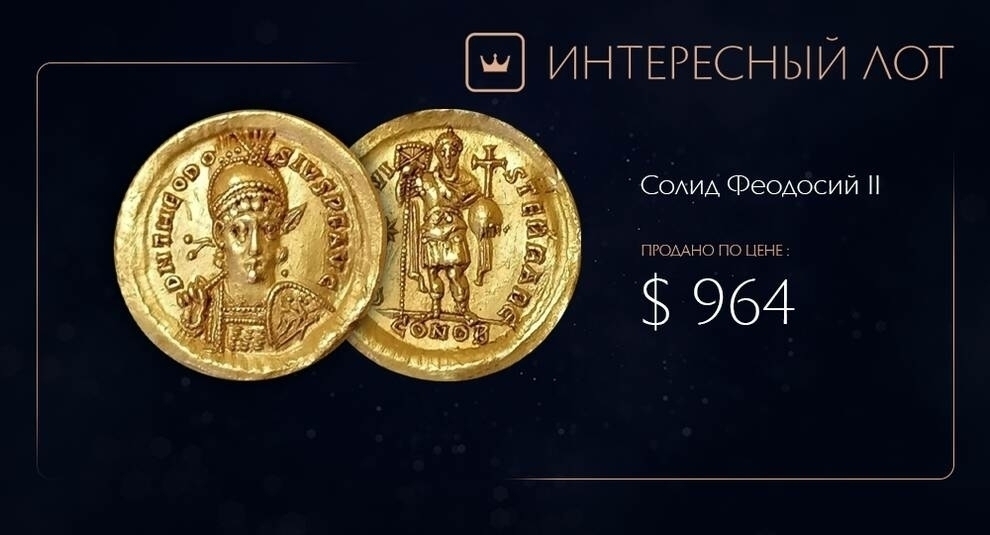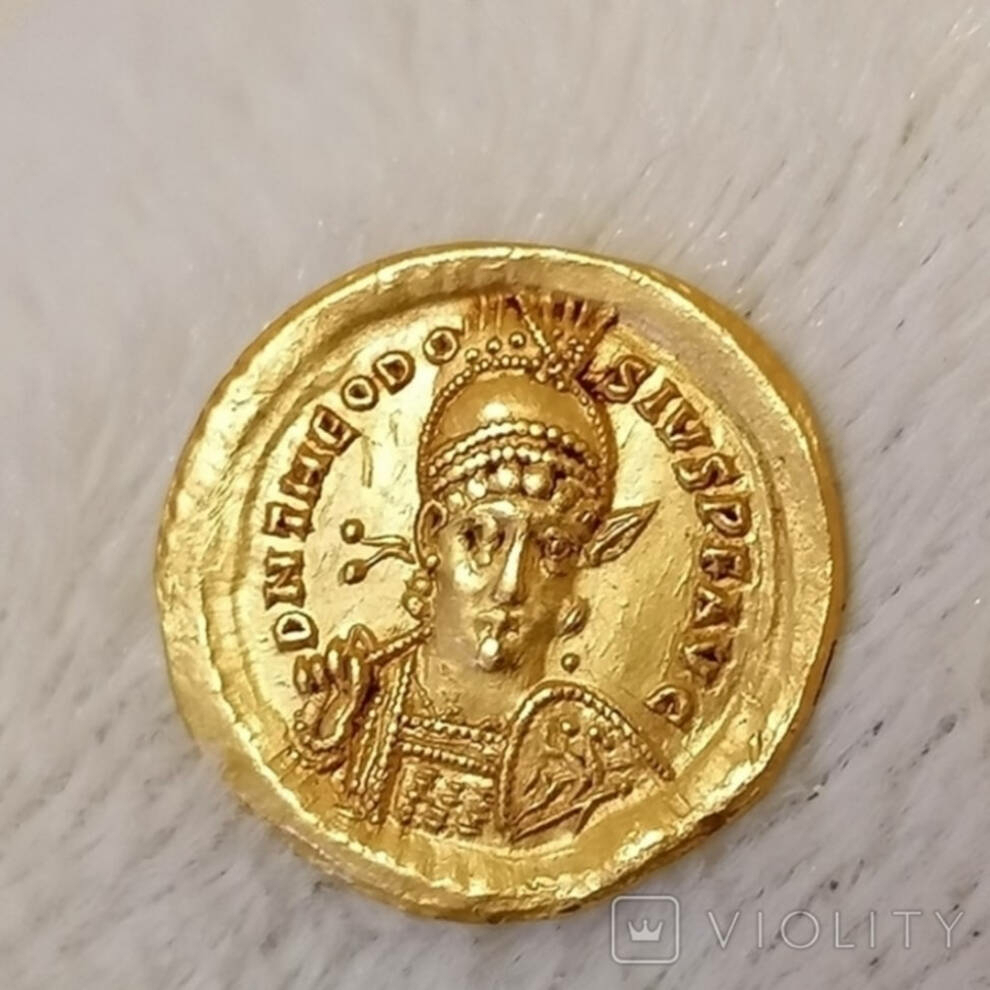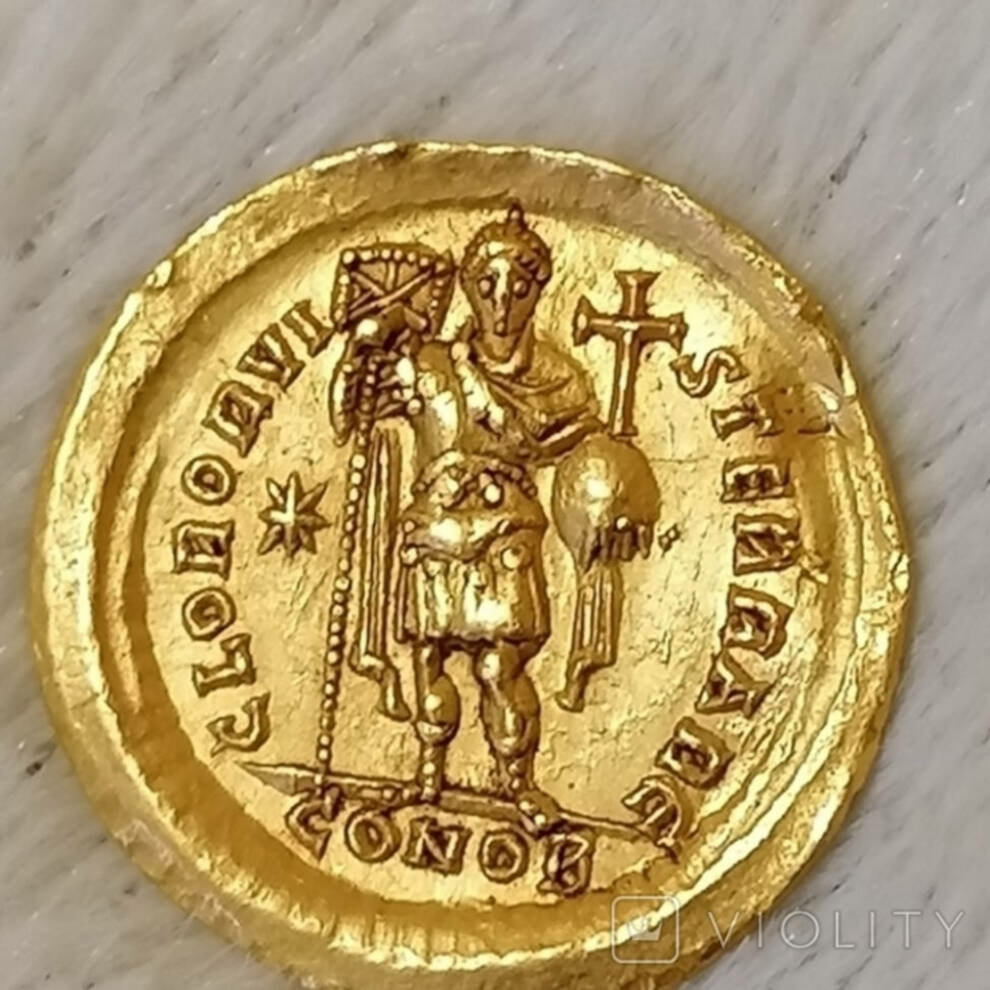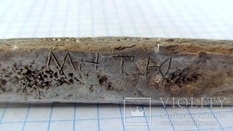
Solid Theodosius II - memory of the peace treaty with the Persians and a tribute to the Huns
The solidus of Theodosius II, who ruled the Eastern Roman Empire in 408-450, was sold for 26,000 hryvnia on Violiti. He was the nephew of the Emperor of the Western Roman Empire Honorius, solid which we presented in the previous article.
Theodosius II was proclaimed by Augustus in infancy - this has never happened in the history of Rome. At the age of 7, left an orphan, he was under the care of first the generals, and then the elder sister of Pulcheria. He was an extremely educated person, well versed in the intricacies of Christian doctrine, while, unlike his grandfather, he practically did not take part in organizing the defense of the empire.
If the main threat to the existence of the Western Roman Empire at that time was various Germanic tribes, then for the Eastern Roman Empire the main danger came from endless religious strife that threatened the stability and integrity of the empire.
Councils, designed to resolve contradictions, follow one after another (First and Second Ephesus, Chalcedonian). In 420-422, due to the intolerant religious policy of Persia, a war begins between the Sassanian and Eastern Roman empires, which ends in a draw, since the Huns sided with Persia.
A terrible disaster was the invasion of the empire in the 440s by the Huns under the leadership of Attila. The Danube provinces of the empire were devastated and depopulated, the empire was forced to pay an indemnity comparable to the annual emission of a gold coin.

The solidus presented by us was minted in 424-425 at the Constantinople Mint in the period after the conclusion of peace with Persia. On the obverse of the coin - the portrait and title of the emperor, on the reverse - the emperor holds a labarum and a cross on a ball, declaring his power over the world. The cross on the ball later became an invariable attribute for imperial regalia, in particular in the Russian Empire it was called Power.
The fate of this coin is interesting. Released to celebrate the advent of peace and prosperity in the empire, it could be captured by the warriors of Attila or get to them as an indemnity mentioned above.

[foto5]
Coins of Rome and the Byzantine Empire, as invaluable evidence of history, are waiting for you in the section numismatics (Gold, electric coins of ancient and medieval states).
Explore history with Violiti!
Theodosius II was proclaimed by Augustus in infancy - this has never happened in the history of Rome. At the age of 7, left an orphan, he was under the care of first the generals, and then the elder sister of Pulcheria. He was an extremely educated person, well versed in the intricacies of Christian doctrine, while, unlike his grandfather, he practically did not take part in organizing the defense of the empire.
If the main threat to the existence of the Western Roman Empire at that time was various Germanic tribes, then for the Eastern Roman Empire the main danger came from endless religious strife that threatened the stability and integrity of the empire.
Councils, designed to resolve contradictions, follow one after another (First and Second Ephesus, Chalcedonian). In 420-422, due to the intolerant religious policy of Persia, a war begins between the Sassanian and Eastern Roman empires, which ends in a draw, since the Huns sided with Persia.
A terrible disaster was the invasion of the empire in the 440s by the Huns under the leadership of Attila. The Danube provinces of the empire were devastated and depopulated, the empire was forced to pay an indemnity comparable to the annual emission of a gold coin.

Photo © auction.violity.com
The solidus presented by us was minted in 424-425 at the Constantinople Mint in the period after the conclusion of peace with Persia. On the obverse of the coin - the portrait and title of the emperor, on the reverse - the emperor holds a labarum and a cross on a ball, declaring his power over the world. The cross on the ball later became an invariable attribute for imperial regalia, in particular in the Russian Empire it was called Power.
The fate of this coin is interesting. Released to celebrate the advent of peace and prosperity in the empire, it could be captured by the warriors of Attila or get to them as an indemnity mentioned above.

Photo © auction.violity.com
[foto5]
Coins of Rome and the Byzantine Empire, as invaluable evidence of history, are waiting for you in the section numismatics (Gold, electric coins of ancient and medieval states).
Explore history with Violiti!


